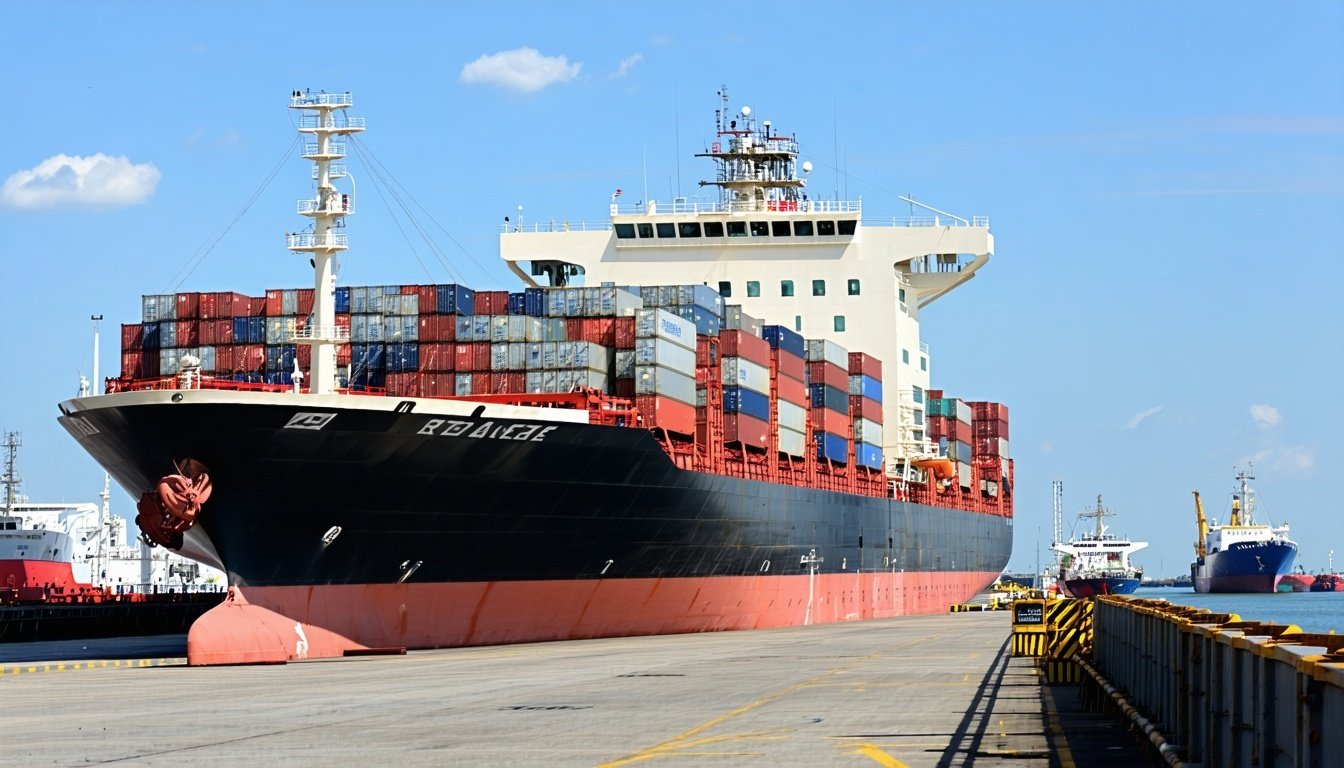Border Security Report: America’s Tough Stance Against the Cartels Will Impact Europe and Its Ports
Aug 2, 2025

This article first appeared on www.border-security-report.com.
America’s approach to Mexican drug cartels changed when President Trump signed an Executive Order designating certain cartels as Foreign Terrorist Organizations (FTOs), and the subsequent hardening of the US/Mexico border.
Following the order, the House Committee on Homeland Security called on law enforcement to more actively address threats on US soil from violent Transnational Criminal Organizations (TCO) like Tren de Aragua, the largest criminal organization in Venezuela. The committee also requires the US to enhance its efforts in foreign countries to thwart international drug trafficking and human smuggling, creating an opportunity for Europe to optimize its drug enforcement operations.
The modification of the US approach is something the European counter-narcotics agencies and port authorities must be aware of as it changes the game for the cartels, especially their leadership. Apart from being drug dealers and facing the often-restricted opposition from America’s law enforcement operations, as FTOs, their operations become a national security concern, and the charges they face in the United States are far more severe. The leaders of the cartels, therefore, do not want to be extradited to America, as they know they face spending the rest of their lives in a maximum-security prison.
The cartels’ American connections are also reticent to openly support these organizations in the future, as the FTO designation implies they can face charges as domestic terrorist proxies according to 18 U.S.C. 2339A and 18 U.S.C. 2339B. These federal statutes address providing ‘material support’ to terrorists, which does not require that they have the same ‘specific intent’ as the terrorist, but only that they are aware of what their support (transport, storage, money laundering, etc.) is intended for.
The declaration of cartels as FTOs is, therefore, a win for American law enforcement as it gives them more leverage in a long and frustrating conflict. However, the result is that the cartels have intensified their growth strategy in Europe to prepare for a possible decline in their American revenue. Cartels are increasingly exploiting Europe’s seaports and its reliable road and rail connections between member countries to move people and goods throughout the borderless, 4 million square kilometer region.
The fact that the EU (and Canada) have not extradited drug dealers in the past is another benefit for criminals targeting the region. Focusing on the EU is, therefore, a good business strategy for the cartels. The risk of extradition is low, and the EU is a mature market with sophisticated supply chains (both legal and illegal) that can be exploited to increase profits.
The nightmare scenario of tens of thousands of annual overdose deaths, the social impact of increased addiction rates, and a significant rise in violent crime is therefore at Europe’s door. The region has the opportunity to prevent it from becoming a frightening reality if it can strengthen its political resolve, improve cooperation among internal and international law enforcement agencies, and take the necessary steps to secure its ports and long, porous coastline.
Is EU law enforcement ready for the challenge?
The EU is no stranger to the drug trade, with the European Union Drugs Agency (EUDA) reporting the consistent drug usage in the EU, with large numbers of illicit substances available, with marijuana and cocaine (the leading and second most popular drugs), respectively, showing increased usage over the past year.
EUDA also notes that there is evidence for increased domestic production of synthetic drugs, such as amphetamines and MDMA. Authorities are concerned that local production may lead to changes in consumption trends, which suggests heightened challenges for the effectiveness of current monitoring systems and the suitability of existing responses. It also raises the shadow of fentanyl addiction with the associated high fatality rates, something the US experienced firsthand.
Local production does not exclude the Mexican cartels in favor of domestic European TCOs; it includes them through a “transfer of know-how and a migration of criminal syndicate members” to EU countries, where they assist in developing methamphetamine laboratories. The same report relates the increase in violence in the EU drug market to the cartels’ influence.
European authorities have long focused on drug smuggling, achieving some notable successes. Drug seizures at the two primary seaports most used by smugglers, Antwerp in Belgium and Rotterdam in the Netherlands, declined by half in 2024 compared to 2023. Unfortunately, this shift is because cartels have redirected their efforts toward less secure ports in Spain, Portugal, and Scandinavian countries, where authorities can expect to see violence linked to cartels soar.
Commercial ports, therefore, continue to play a crucial role in the drug trade within the EU. Synthetic opioids, including substances like fentanyl and nitazenes, can be manufactured in the EU because the necessary chemical precursors are readily available domestically. When it comes to narcotics based on plants, such as cannabis, heroin, and cocaine, importing the product, or the foundation elements of the substance, still requires transnational trade.
New challenges require new strategies
Sophisticated anti-narcotic operations and operatives are already working around the clock to counteract the EU’s illicit drug trade. While there are many success stories, the shift in TCO tactics will necessitate new strategies, prompting EU authorities to leverage their integrated structure and approach more effectively. For example, in the context of ports, a public-private partnership known as the European Ports Alliance was established in 2024 to enhance the fight against drug trafficking and organized crime. A partnership approach like this is crucial for addressing drug crime and finding solutions to protect ports.
The solutions to what amounts to a more intense organized crime attack against the region are complex. TCOs have advanced intelligence operations at ports and along all the road and rail routes throughout the EU to support their operations. In the ports, the influence of these criminal organizations extends from harbor masters to dock workers who accept bribes to facilitate the passage of shipments. Not everyone cooperates willingly, but the threat of violence to ensure compliance is common.
Most large drug shipments entering Europe are smuggled inside shipping containers; for example, they could be concealed within shipments of bananas from a country in Central America. Authorities must therefore enhance their intelligence operations to gain more insights into which ships to focus on and what cargo is potentially compromised by monitoring port workers. Human intelligence remains a crucial factor in mitigating the risks associated with narcotics smuggling.
Technology can also help examine data from all ships scheduled to dock in EU ports, which can be analyzed along with their registered cargo. If containers linked to companies suspected of being cartel fronts are discovered, or if an unknown corporation suddenly appears to be shipping goods, the suspect containers must be opened and thoroughly searched.
Similarly, vessels that have taken a roundabout route instead of the direct route from origin to destination must be marked as suspect. Transporting cargo over the ocean is expensive, and legitimate companies take the shortest and safest route to their destination.
Another increasingly common tactic to smuggle drugs into Europe is the ‘mothership’ approach. Using cargo ships, fishing vessels, merchant ships, and sailboats with compromised crews, hundreds of kilograms of cocaine (or whichever drugs are shipped) are dropped offshore. TCO speedboats then pick up the packages, which are outfitted with GPS locators or infrared beacons for quick location, and bring them onshore without the hassles of passing through customs.
These shipments are generally successful because it is impossible to monitor and patrol thousands of miles of coastline for small boats and floating drug packages. Even with the aid of intelligence, boat and air patrols, and satellite surveillance, the area to monitor and the human resources needed to intercept drop-offs are beyond the capacity of any country. Once again, human intelligence remains crucial for gathering information to support drug interdiction.
An integrated, global approach to confront TCOs
Despite the political animosity prevalent in the world today, including between the EU and the USA, enhanced cooperation across the Atlantic Ocean is the best way to deal a devastating blow to the cartels and European TCOs involved in drug smuggling. One approach that will empower better collaboration is for the EU to follow the American example and declare the cartels as FTOs and their EU partners as Domestic Terrorist Organizations (DTOs).
With both continents addressing the TCOs as terrorist organizations, more law enforcement and intelligence agencies will be involved in the fight.
Additionally, cooperation between the two continents will also leave the cartels on the back foot, with more pressure, including political pressure on countries hosting the cartels, creating more opportunities to curtail their deadly trade.
In this scenario, Interpol could serve as the central hub for Europe’s operations against the TCOs, working closely with the US Attorney’s Office to coordinate operations among the respective law enforcement agencies. The joint venture would also capitalize on joint intelligence operations to strengthen efforts to disrupt the financial supply chain that the cartels rely on, targeting financiers internationally. A criminal prosecution is not as intimidating to banks as a guilty verdict for providing material support to FTOs or DTOs.
The threat of prosecution from two global powers that rank first and third in terms of global GDP will limit the cartels’ options, both in terms of narcotics smuggling and their access to money laundering partners. Reducing their cash flow in this manner will result in internal pressures, which could lead to internal strife and dissatisfaction, and the inability to pay as many bribes to smooth the path for smuggling drugs into both regions.
Cooperation will also balance the regions’ laws in terms of precursor chemical production and distribution, degrading the ability to produce synthetic opioids to replace the reduction in cocaine and heroin supplies.
Integrated information and targeted operations
Designating the cartels and their TCO partners as FTOs and DTOs will suffocate the cartels, reducing their power as their cash flow decreases and their ability to manufacture drugs on any continent is degraded, even in countries that are currently deemed safe for their operations. Europe would no longer be safe for cartels, especially if the cooperation agreement entails extradition to America and/or simultaneous prosecution of cartel members and their partners in the US and EU.
Europe will also gain insights into the synthetic opioid epidemic that hit the US, resulting in over 100,000 deaths in 2023, hopefully allowing European authorities to proactively prevent a similar tragedy. Put simply, sharing and integrating information to develop powerful yet effective collaborative tactics to address drug smuggling will benefit both parties, to the detriment of the cartels.
There is no easy way to address cartels and other TCOs. Authorities in Europe and the US are aware that these organizations have no moral or ethical boundaries and can’t be confronted with laws, discussions, and gentle philosophies. The only way to degrade these organizations is to attack them directly and harshly, striking the vulnerabilities that joint operations create, while removing their safe places in Mexico, Venezuela, and other South American countries. Only through decisive and collaborative global action can cartels be effectively confronted and their power and influence broken.
Views expressed in this article are the opinions of the author, and do not necessarily reflect the views of Rigaku Analytical Devices.


Contact Us
Whether you're interested in getting a quote, want a demo, need technical support, or simply have a question, we're here to help.
